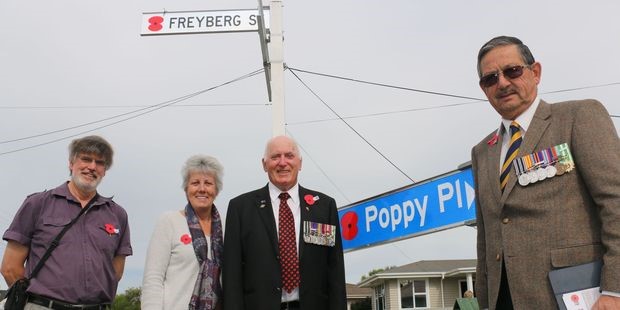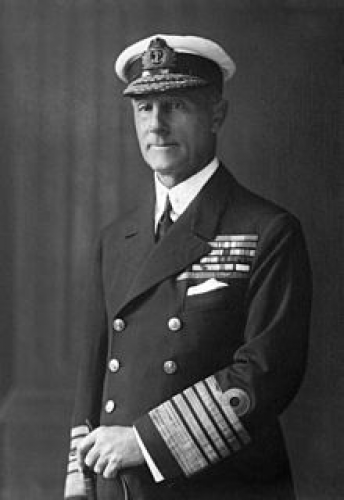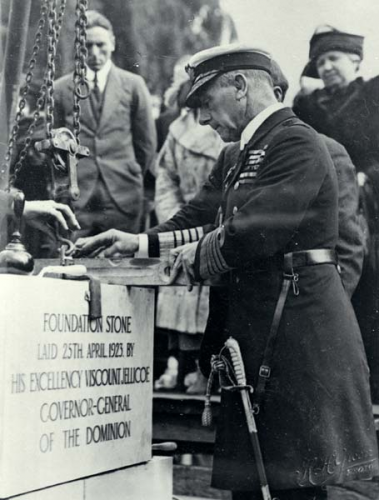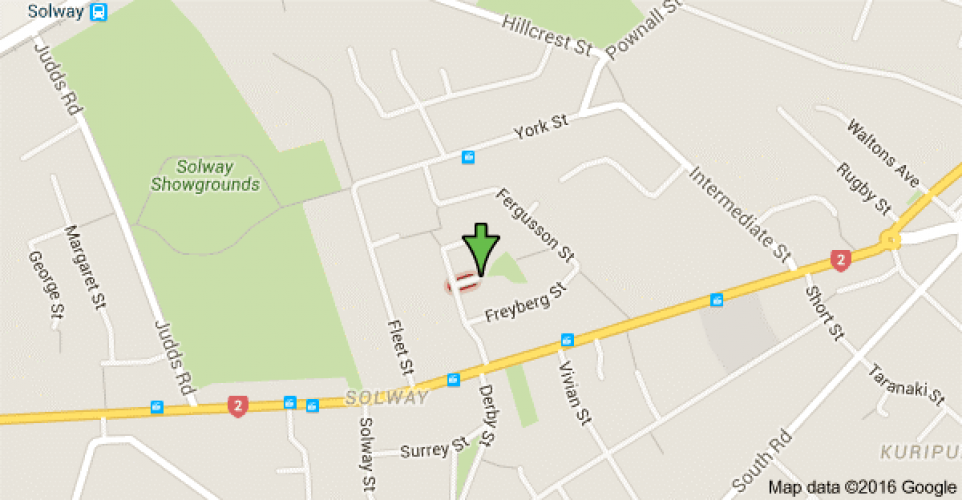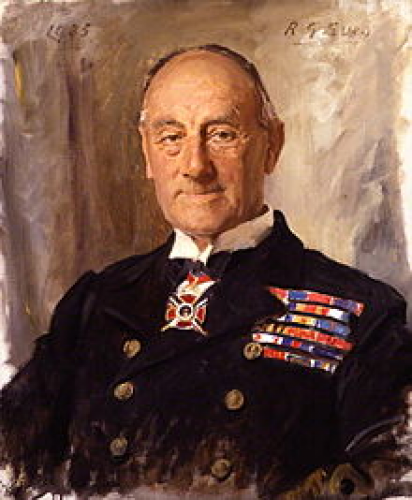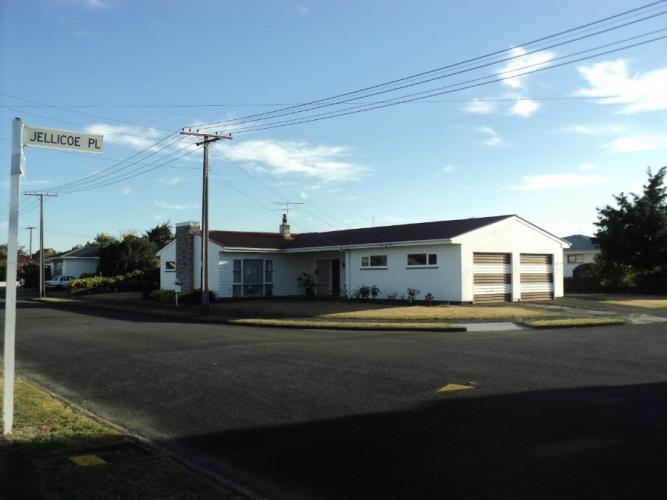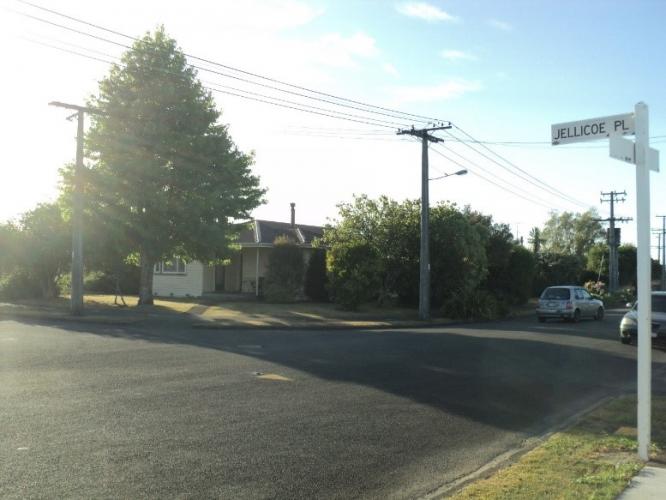051 Jellicoe Place Masterton, street view 2017
Reason for the name
At a meeting of Masterton Borough Council on 22 July 1958 it was moved by Councillor Morton, seconded by Councillor Donald that among other streets in the new subdivision between High St and York Streets a new street should be named Jellicoe Place. This naming was in honour of Govenor General Jellicoe but this story also recognises his military career as Admiral of the Fleet Sir John Jellicoe, GCB, OM, GCVO, SGM (later 1st Earl Jellicoe)
At a meeting of Masterton Borough Council on 22 July 1958 it was moved by Councillor Morton, seconded by Councillor Donald:
“That the following names representing former Governor-Generals in New Zealand be allocated to the streets in the new subdivision between High St and York Streets.
Bledisloe, Galway, Hobson, Jellicoe, Newall, Liverpool, Freyberg and Fergusson.”
Of this group, Galway was never used and Liverpool became part of a second group of streets named after former governors and governor-generals of New Zealand.
Jellicoe Place is a small no-exit street in the Solway suburb of southern Masterton. It runs off Bledisloe Street and contains just eight houses.
Jellicoe Place and the surrounding streets were formed in the late 1950s as Masterton’s population increased and empty land between older streets was in-filled.
Admiral of the Fleet Sir John Jellicoe, GCB, OM, GCVO, SGM (later 1st Earl Jellicoe) commanded the Grand Fleet of the Royal Navy 1914-1916 including the Battle of Jutland in May 1916. After the battle Winston Churchill described Jellicoe as “the only man on either side who could lose the war in an afternoon” – showing the importance of his command at the time.
Born in 1859, Jellicoe joined the Royal Navy aged 13 and had a distinguished career, being promoted to captain in 1897. He took part in the expedition to relieve Peking in 1900 during the Boxer Rebellion and was badly wounded.
After Jutland he was appointed First Sea Lord of the Admiralty in November 1916 and held the post until December 1917. He was created Viscount Jellicoe of Scapa Flow in March 1918.
Jellicoe was appointed Governor-General of New Zealand and arrived in September 1920. He was offered the position in either Australia or New Zealand and opted for New Zealand.
The Manchester Daily Despatch was quoted in the Christchurch Press (10 July 1920) commenting on his appointment:
An unusually enthusiastic welcome awaits Lord Jellicoe when he arrives “in that most loyal of all the Dominions.”
The appointment is a distinct improvement upon former selections of Governors and Governors-General, who have generally been either party hacks or impecunious peers.
Jellicoe’s appointment, according to New Zealand newspapers, was widely welcomed. As one of Britain’s most prominent military leaders in World War One, he was better-known to New Zealanders than most previous vice-regal representatives.
As with Bernard Freyberg after World War Two, the acceptance of his appointment owed much to his reputation as a military figure and as a war leader.
He visited the Wairarapa several times, including Anzac Day in Featherston, 1921.
He returned to Britain after his New Zealand term and died in 1935.


